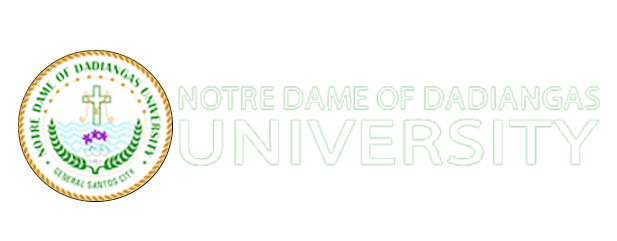The immensity of the exposed news online has given everybody a prospect to manipulate information; and so, confusion and misinformation transpire, and the evaluation of credibility and trustworthiness becomes intricate. In spite of the continuous efforts of various academic institutions to provide a wide array of databases and resources among learners – still the current phenomenon called fake news has incessantly dispersing. This research has explored the university students’ dis/engagement to fake news. Using quantitative measures, it was revealed that the students had used online platforms for communication processes and for retrieving and allocating information. Moreover, upon text mining the student responses, nearly all defined fake news as satirical with misleading and fabricated content which tends to deceive and do harm to people. Students also have a moderate view in which they scarcely believe that as they disengage to fake news, they will develop their communication skills since they learn how to fact check information before sharing it. Lastly, the content analysis has revealed various themes divulging students’ experiences to fake news and its implications to the curriculum.
Introduction
The notion of fake news is connected to the complex situation of a decline in public trust coupled with the current state of journalism (Zaryan, 2017). For decades, the term fake news experienced a dramatic surge in Google searches – fake news, therefore, has proven to be an elusive term. Within the media itself, its definition includes satire, hoaxes, poorly reported news that often gets retracted, a misuse of data, and imprecise and sloppy journalism (Johnson, 2016 & Schow, 2017). In the Philippines, the National Union of Journalists (NUJ) and the Cebu Citizens-Press Council (CCPC) in March 2017, has released its definition which tells that fake news is when standards of journalism including its scope of content are violated. However, in spite of the definition of its concept, the main contention would be whether or not, learners – specifically the students in the tertiary level understand fake news in the context of their online media exposure.
In an institution such as the Notre Dame of Dadiangas University (NDDU), college students have been exposed to different media both for leisure and socialization (Decendario, 2018). The rapid field assessment has revealed that the student’s substantial screen time exposure and engagement to online media (e.g. exposure to mostly all forms of media) have incrementally led to various conflicts academically, socially and in terms of peer interaction. Moreover, the institution’s library (for instance), has subscribed to diverse and up-to-date print and online resources for the students to maximize the extent of resources through providing them with quality databases and materials essential in their academic journey in the university. However the student’s exposure to online media has led the students to disseminate wrong news; thus, social conflict occurred due to giving wrong judgment and misinformation towards their peer. According to Schudson (1996) as cited in the study of Zaryan (2017), overexposure and too much engagement to online media may affect one’s life drastically.
Statement of the Problem
This study has examined the students’ dis/engagement to fake news within the context of online media. Specifically, the following research questions were answered:
- What are the online activities engaged in by the university students?
- How do the university students define fake news in the context of online media?
- How do the university students view the effects of their engagement and disengagement to fake news in their development, in terms of:
- Academe;
- Communication Skills; and,
- Interpersonal Skills?
- What are the experiences of the university students to fake news in the context of online media?
- What are the implications of the students’ engagement to fake news to the curriculum?
- Based on the findings, what media literacy program can be designed?
Research Methodology
This study utilized quantitative – qualitative method of research. Specifically, this involved a conducted a survey on students’ most frequent online activities and how they view the effects of fake news as they dis/engage to such. Furthermore, with their online experiences and exposures, this research also text mined the student’s definition of fake news and how their experiences affect the institution’s program through examining its implications in the academe, as a whole through a thematic content analysis of Moustakas in 1994 as cited in the study of Salinas (2017).
References
Cebu Citizens-Press Council (CCPC) (2017). Retrieved from: http://www.sunstar.com.ph/article/422249/CCPC-offers-definition-of-fake-news on September 2018.
Decendario, A. C. (2018). Health implications on technology usage among college students. Unpublished Research. Notre Dame of Dadiangas University. Research and Publications Center.
Johnson, H. (2016). Journalistic hoaxes in American culture. Retrieved from search.proquest.com/openview/23a503fdfdbc/1?pq..cbl on October 2018
Marchi, R. (2012). With Facebook, blogs, and fake news, teens reject journalistic objectivity. Journal of Communication Inquiry. 36(3), pp. 246-262.
National Union of Journalist (NUJ). Retrieved from https://www.nuj.org.uk/home/ on October 2018
Rayess, E., et al. (2017). Fake news judgment: the case of undergraduate students of Notre Dame University-Louaize, Lebanon. Retrieved from https://scinapse.io/papers/2794206717 on October 2018
Salinas, E. (2017). Academic journey of Blaan Tertiary Students. Unpublished dissertation. University of Immaculate Conception. Davao City.
Schow, A. (2017). The case against the media. Retrieved from nymag.com/daily/intellengecer/2016/07/case-against- media.html on December 2018
Schudson, M. (1996).The power of news. Cambridge: Harvard University Press
Wardle, C. (2016). “6 types of misinformation circulated this election season”. Retrieved from: https://www.cjr. org/tow_center/6_types_election_fake_news.php (2017-05-05) on August 2018.
Yuksel-Arslan, R. & Yildirim, S.(2015). Theoretical Frameworks, Methods, and Procedures for Conducting Phenomenological Studies in Educational Settings. Retrieved from https://www.researchgate.net/publication/271833455_Theoretical_Frameworks_Methods_and_Procedures_for_Conducting_Phenomenological_Studies_in_Educational_Settings on September 2019
Zaryan, S. (2017). How audiences are making sense of fake news. Retrieved from http://lup.lub.lu.se/luur/download?func=downloadFile&recordOId=8906886&fileOId=8917210 on September 2018.


